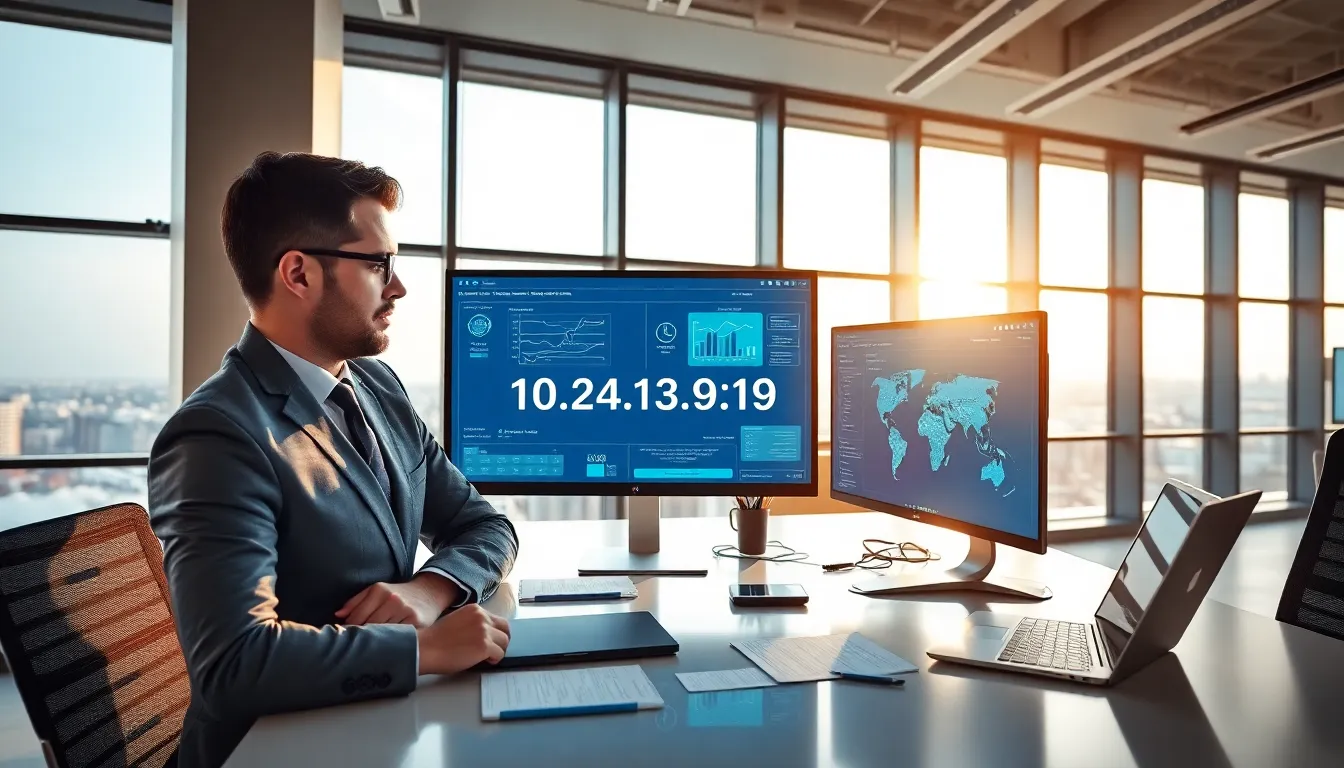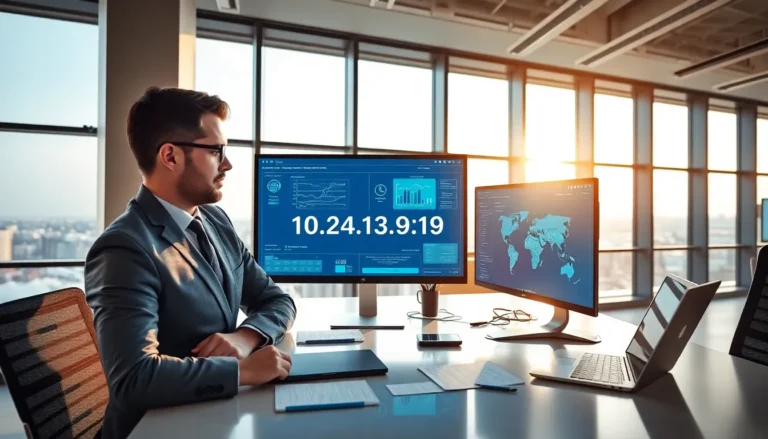Ever stared at an IP address and thought it looked like a phone number from another dimension? You’re not alone. At first glance, 10.24.1.39.113 doesn’t seem that exciting, but it holds secrets that can unlock a better understanding of how devices communicate across the internet. Stick around as we investigate into the digital world of IP addresses, exploring what makes them tick, and why understanding them is more essential than ever.
Table of Contents
Toggle10.24.1.39.113

What Is an IP Address?
An Internet Protocol (IP) address functions as a unique identifier for devices on a network. Imagine it as a home address but in the cyber world. This address enables computers, routers, and servers to locate and communicate with one another, ensuring that data travels seamlessly from one point to another.
Types of IP Addresses
There are two main types of IP addresses: IPv4 and IPv6. IPv4 consists of a series of four numbers ranging from 0 to 255, separated by periods, like our example 10.24.1.39.113. This format has served us well but can accommodate only about 4.3 billion addresses, a number we are rapidly outgrowing. Enter IPv6, which increases the address space immensely, utilizing alphanumeric strings to allow trillions of possible addresses. Both types play crucial roles in our daily Internet interactions.
Private vs. Public IP Addresses
IP addresses are classified into two categories: private and public. Private IP addresses fall within specific ranges reserved for local networks, ensuring that devices within the same setup can communicate without interference from the outside world. For example, home Wi-Fi networks often use private IP addresses so devices can connect smoothly.
On the other hand, public IP addresses are visible on the internet and enable devices to connect outside their local network. Your Internet Service Provider (ISP) assigns these addresses. Both types serve essential functions, ensuring users can access or host services while maintaining secure connections.
The Significance of 10.24.1.39.113
Potential Uses of the IP Address
The IP address 10.24.1.39.113 is classified as a private IP address, which means it can only be accessed within a local network, like a company or a household. Depending on the context, it could be tied to a variety of devices like printers, computers, or web servers that need to communicate with one another without public internet exposure.
Security Implications
While 10.24.1.39.113 is primarily used within a private context, security concerns still loom. Using private IP addresses like this means that while external users can’t reach it directly, vulnerabilities still exist within the local network. A hacker within the network might exploit devices connected to this IP address unless proper security measures, like firewalls and strong passwords, are enforced.
Analyzing Network Traffic and Performance
Understanding how 10.24.1.39.113 interacts within your network can yield critical insights into network performance. By using monitoring tools, users can track traffic, identify bottlenecks, and confirm that devices are functioning optimally. Analyzing this information can lead to improved speed, responsiveness, and overall reliability.
How to Check and Track an IP Address
Tools for IP Address Lookup
When investigating an IP address, several tools can come in handy. Services like IPinfo, WhatIsMyIP, and Reverse IP Lookup provide useful data about any IP address, including its location and unique identifier. Although 10.24.1.39.113 is private, similar tools can help uncover pertinent details about public IP addresses, offering insight that can aid in troubleshooting or configuration of network devices.
Interpreting IP Address Information
IP address information can feel overwhelming at first but breaking it down is key. Each part of an IP address provides data about network segmentation, device types, and geographic location (if applicable). Familiarizing oneself with patterns in this data can make monitoring and troubleshooting network issues significantly easier.





